Boardroom dives deep into Elliott Hill’s new reign at Nike with insight from employees and industry leaders.
As he took the stage of the Tiger Woods Center’s sprawling auditorium last Monday, where Nike often hosts its largest campus presentations, Elliott Hill officially began his first day as President and Chief Executive Officer at Nike Inc. His unbuttoned black button-up bore a centered Swoosh on his grey t-shirt underneath, while a bright white pair of the upcoming Pegasus Premium sneaker, releasing in 2025, featured a full-length visible Zoom Air unit in the exact orange shade of Nike’s original shoe box.
Deepa Ramprasad, Nike’s new Senior Director of Lifestyle Footwear, who shifted over from a stint overseeing both Men’s & Women’s Basketball Footwear, hosted a Q&A with the new CEO. Hill’s engaging and personable traits, which have long made the Austin, Texas native a beloved employee for over 30 years quickly shined through.
The loose conversation, which was streamed for Nike Inc. employees and partners across the global ecosystem of its Nike, Jordan, and Converse brands, keyed in early on a simple question:
Why are you back at Nike?
“I have an irrational love for this brand,” beamed Hill.

Cheers and claps made it feel like more of a pep rally than another corporate presentation. It was a sharp contrast from some virtual CEO meetings in the last year, where employees popped off with real-time complaints in the sidebar’s public chat window.
Instantaneously, the vibe across the 400-acre Beaverton, Oregon, campus — now home to nearly 80 corporate buildings — had shifted. Employees took to social media and group chats immediately to celebrate Hill’s new start.
“I’ve never seen so much love for a CEO, especially at Nike,” a Sales and Merchandising Director wrote.
There’s a noted energy that Hill aims to bring to the job, but more importantly, an institutional knowledge of what truly makes Nike — Nike — when it comes to continuing the brand’s quest to lead across innovation, its connection to the best athletes across the world, and how Nike can inspire through its products and campaigns.
As an outsider, I never fully bought into the doomsday storylines that embattled the final year of former CEO John Donahoe’s tenure. While the stock price stumbled, Nike didn’t become “uncool” overnight, in my opinion. While competitors credibly and commendably have found success in the last handful of years, striking in both running and lifestyle lanes, Nike is still a pinnacle brand that athletes around the world want to be associated with.

Some employees were drained. Others felt the brand had lost the foundational nimble spirit that Phil Knight established for decades. There was a soured aura on campus at times, which was unlike the dream factory-esque atmosphere inside “the berm” in Beaverton over the nearly 20 years that I’ve been frequently visiting.
“As a second-generation Nike employee, today feels like the Nike I always heard about and witnessed growing up here,” said a Senior Manager, whose mom worked at Nike for 15 years during her childhood as they lived ten minutes from campus.

Even before his official first day, Elliott Hill was already setting the stage for his new tenure as CEO with an internal welcome message that simply stated: “Hello, Nike Family.”
“It’s been too long since I’ve heard anyone refer to our employees as family,” wrote a Director. “I have to say, it feels really good right now to be part of this family.”
Hill’s rise over 32 years at Nike is well documented. His LinkedIn lineage led to immediate virality across the business landscape and social media once Nike announced on Sept. 19 that the 61-year-old Hill would be returning to the company, after retiring in 2020, as its new CEO.
“I believe Sept. 19, 2024, will be a critically important inflection point in Nike’s history,” Scott Reames, Nike’s first corporate historian, wrote on his LinkedIn page.
“There are a LOT of former and current employees who are extremely happy, and more importantly, optimistic, for the first time in quite a while,” Reames continued.
Reames went on to list a few lines his former colleagues threw at him, ranging from the simple “Amazing news” up to “Nike turnaround just got the boost it needed.” One quote Reames dropped went as far as saying, “I have tears in my eyes.”
The reaction partly stemmed from Hill’s track record over his 32 years. There’s also an unmistakable element of relatability and hope that his path can provide for employees of all ages and levels of the brand. He wasn’t wearing a bland suit in the company’s announcement portrait, but rather a black Nike logo crew sweatshirt. This is a company built on sportswear, afterall.
As he spoke to the campus crowd on Monday, he paused and thought back through his three decades at the brand before flashing forward to the realization that he was now in the company’s top chair.
“It sure feels good to be home,” he said.
Hill really did go from intern in 1988 to CEO. He had originally told his single mother that he had a job at Nike just after college, though it was only a short-term internship in the sales department of the brand’s Memphis territory. He started just after the company launched its iconic “Just Do It” campaign and had foundational footwear launches with the Air Max 1, Air Jordan 3, and Air Trainer 1, but he was mostly tasked with selling in apparel collections.
Within six months on the job, Hill was responsible for 168 sales accounts across the Midwest and South regions, featuring a mix of mom-and-pop stores and regional retailers alike. He racked up 60,000 miles a year in his old Chrysler minivan, touring around to tout the brand’s latest apparel.
Much of the narrative around Nike’s recent struggles has been centered on its debated retail strategy that has boxed out both traditional wholesale retailers and the boutiques that have long served as the source of energy that fuels sneaker culture. Both were de-emphasized over the last five years during Nike’s “Consumer Direct Offense” strategy in favor of a larger push towards Nike’s own stores and an emphasis on all energy launches going through its mostly challenging SNKRS App.
Hill’s foundation with the company through the 1990s was grounded in understanding the impact of how retail stores could become key pillars of the community and tell stories around products in different ways than a more polished brand-owned storefront.

As the 2000s came around, Hill soon led all of Nike’s sales channels as its VP of Retail, both in the US and eventually globally during the second half of the decade. While driving vast volumes of distribution worldwide was the revenue driver he was mostly tasked with, Hill always had a true feel for how much energy the smaller mom-and-pop and boutique stores could contribute to sneaker culture overall.
He also realized how NikeTown stores could play a role in that connection as well. That element may have been lost in the last few years.
“When I looked at Elliott, what I saw was someone who got it,” says Steve Mulholland, founder of Sole Collector Magazine, which launched in 2003 and saw its rise during that same decade. “Just as Sandy Bodecker got product design — Elliott got the retail side. And the team of people that worked with him and around him had believed that they were doing something fundamentally great.”
As sneaker culture began to explode in the 2000s through the launch of dedicated magazines and online sneaker messageboards, Hill was instrumental in ensuring that Nike was the pinnacle brand connecting to a top 5% crowd that could influence the overall consumer marketplace.
Mulholland distinctly remembers an early 2005 night in Denver during NBA All-Star Weekend. Sole Collector was hosting one of its first “sneaker competitions,” where collectors showcased a dozen rare pairs on display tables at NikeTown and competed for various awards.
“Elliott casually strolls up to me and says, ‘Steve, how’d you like Tinker, Gentry, Aman, and Charlie Denson to swing by and judge some shoes?’” he recalled.
Hill was connecting the dots, bringing the company’s then-top dogs in Jordan Brand’s Gentry Humphrey, Nike Basketball’s Kris Aman, design legend Tinker Hatfield, and Nike Brand President Charles Denson to the event as special guest judges. To their credit, the execs were celebrities themselves within the sneaker community. Where some companies saw the then-niche world of sneaker collecting as just a subculture, Hill saw the importance.
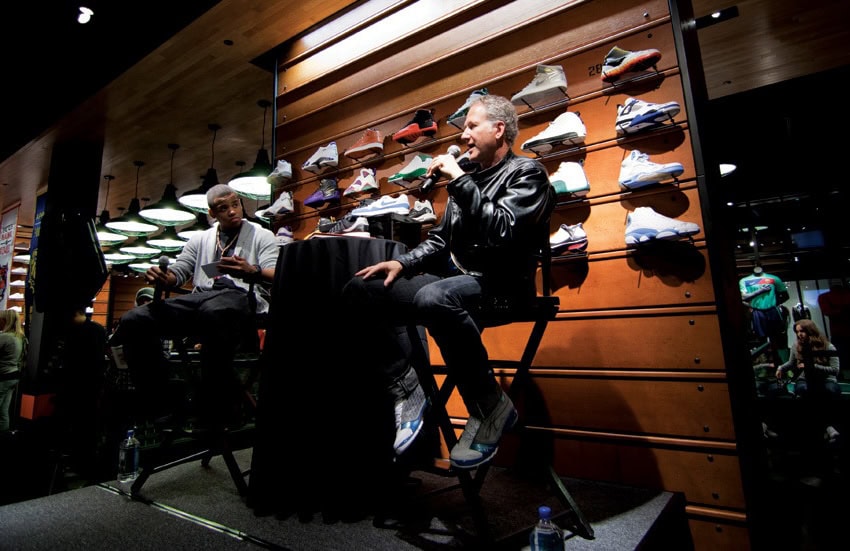
“This wasn’t just name-dropping; it was Elliott recognizing the potential in our young Sole Collector team and bridging worlds,” added Mulholland. “That’s the kind of move that set Elliott apart – he saw connections where others saw boundaries.”
At the helm of the industry’s leading sneaker magazine for a decade — and for transparency’s sake, Steve was my first boss, as I worked at Sole Collector for eight years — Mulholland saw how Hill’s chess moves made their impact across a global landscape, as Nike started to set seemingly outlandish multi-double digit billion dollar revenue targets.
“Under Elliott’s leadership, Nike’s retail game went global in a big way,” said Mulholland. “He didn’t just understand products; he got how to create experiences that resonated with customers worldwide. The retail channel he helped build became a powerhouse, setting standards that competitors just couldn’t match.”
His strategies and key decisions have been praised by those who worked with him as measured and sharp, while Hill also brought a laid-back, friendly, and loose demeanor to his interactions.
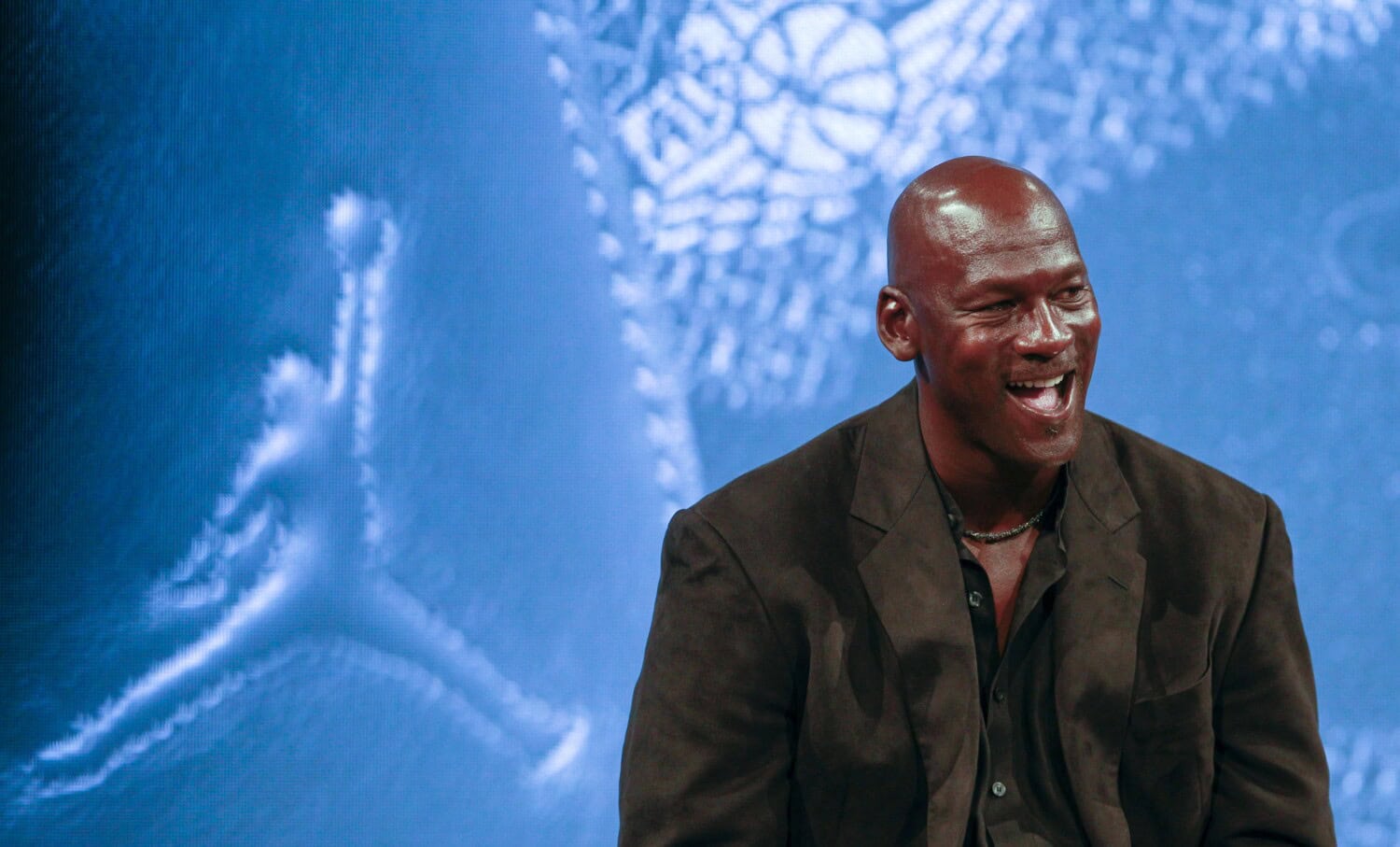
It’s what made Michael Jordan so comfortable during a quarterly business review meeting to once jokingly threaten that he’d shove his Air Jordans up Elliott’s ass if his Jordan Brand’s sales weakened the following year.
When it was time for global expansion, Hill recalled during an interview on the Fortitude podcast that the expansion strategy worried Jordan. MJ was concerned about losing the Jordan Brand’s hold on North America and, in turn, affecting his revenue.
Hill’s strategy looked to push the then-billion-dollar Jordan Brand into new markets with aggressive distribution and global segmentation.
“We gotta do this,” Hill had told MJ. “This is what we do, and you gotta trust us.”
“Elliott, you know what size shoe I wear?” Jordan fired back.
“Yeah, you wear a 13.”
“I’m going to leave this shoe, and I want you to put it on your desk. And if our revenue goes [backward], I’m going to stuff that up your rear.”
“That just shows you his competitiveness,” Hill can now laugh.
Jordan Brand now generates more than $7 billion annually, with some internally estimating it could reach a remarkable $10 billion under Hill’s leadership in the coming years. The Nike Inc. signature subsidiary now stands as the second largest footwear brand in North America, only behind Nike. The global expansion plan indeed didn’t hurt that hold in the US.
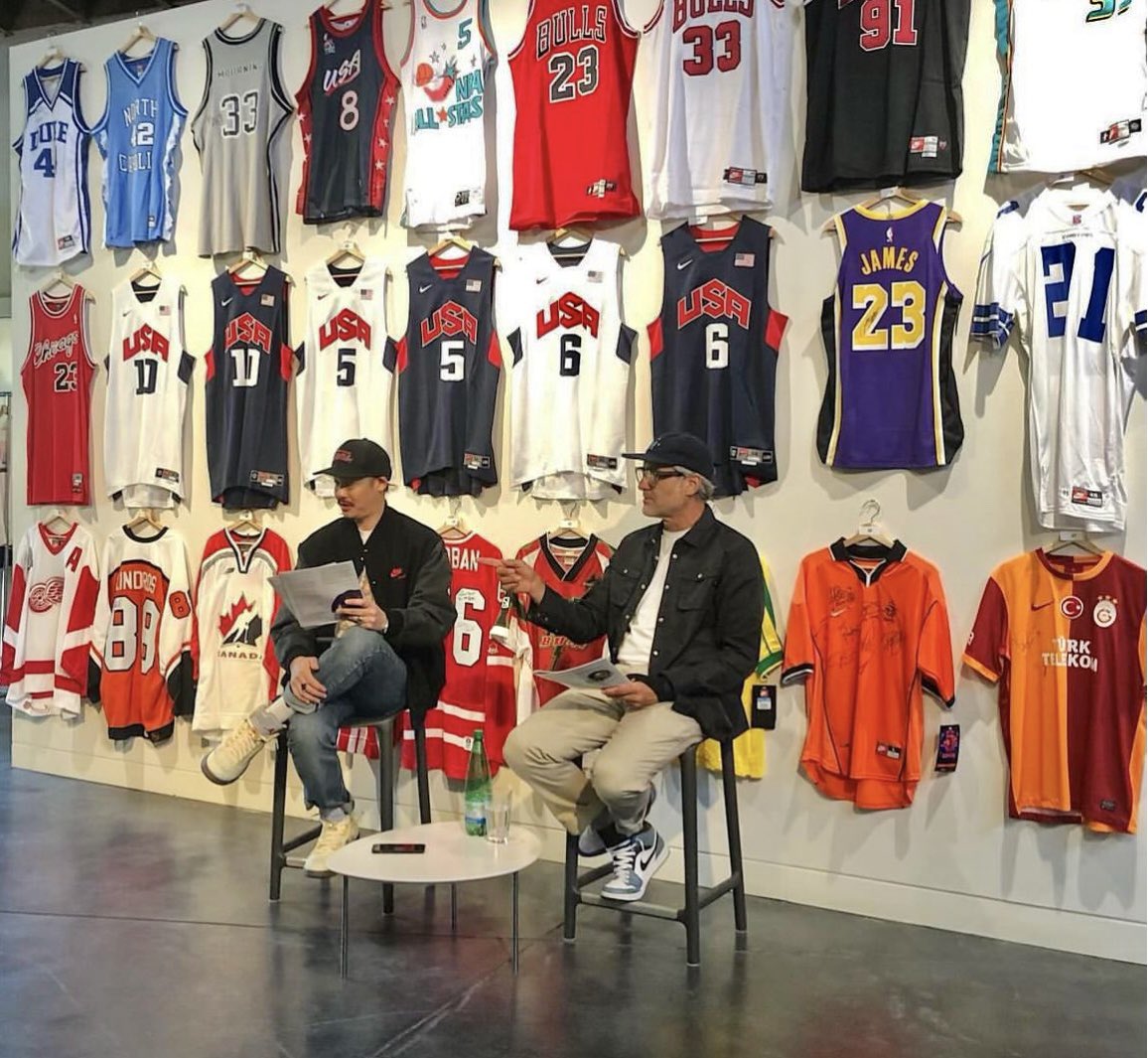
The other key piece that Hill brings back to the brand is his character. Simply put. It’s one of the first things anyone discussing Hill mentions. No matter how big his title touted throughout his first tenure, Hill always kept his personable nature and ability to connect with people at all levels throughout the company.
Hill is a good man, a trait that should be celebrated, as it’s not an industry-given.
After initially leaving Nike in early 2020, Hill utilized his time during the pandemic to round up over 175 collectible items from his own personal collection that he had compiled and stored away in his attic. Hill auctioned off a variety of rare jerseys, sneakers, and artifacts from the past three decades of his career. (And his wife Gina secretly bid and bought back the trio of late ‘90s Jordan, Pippen, and Rodman game-issued Bulls jerseys that he instantly regretted including in the auction.)
The auction raised $2.25 million toward the educational pursuits of middle school and high school students across Portland after Hill and his wife also matched the initial total sales amount, and an anonymous donor also submitted a matching check. It was another in a long line of generous gestures and ways that Hill has looked to make an impact across the Portland region that he’s long called home, just as he’s done through donations to his TCU alma mater and various other organizations.
It’s hard to find someone on campus with a more highly regarded reputation. When Nike was dealing with internal employee well-being issues and claims of toxic dynamics that saw several executives leave the company in 2018, Hill was appointed to the task force panel that looked to improve the employee experience.
“The overwhelmingly positive reaction I’ve read and heard from hundreds of current and former Nike employees has been such an emotional boost to us all,” wrote Reames. “There is a palpable feeling of optimism, of hope, and of outright joy — three things keenly missing of late.”

The campus spirit understandably took a hit in recent years after several waves of layoffs. Top talent frustrated by the direction also left the company on their own accord. One immediate outcome of Hill’s appointment has been renewed interest across the industry in returning or joining the brand. Several top designers I spoke to offered up an unprompted interest in looking into potential roles at Nike. Hill is expected to re-tool the company’s roster with new key hires across silos.
“One thing I was always impressed by was how Elliott surrounded himself with great people,” Mulholland said. “When the people you manage are promoted for decades, then you are doing something right.”
One of the biggest messages that Hill looked to outline during his introductory event at Nike on Monday was simple: “No looking backwards. No finger-pointing.”
He understands there are a few key pillars to really dig in on and hope to correct.
Over the last two years, many mass media outlets have gone in, calling out Nike’s most pressing issues. Specifically, models like the “Panda” Dunks and Air Jordan 1s have been highlighted as being irresponsibly overleveraged to hit sales targets. More generally, the pillars most mentioned in need of help are marketing, product innovation, and retail strategy.
You’re already seeing a bit of a messaging shift from Nike’s all-inclusive positioning post-2020 to a more sport-oriented focus and marketing direction. Dubbed its biggest brand campaign spend in its more than 50-year history, Nike’s “Winning Isn’t For Everyone” commercial leading into this summer’s Paris Olympics was met with mixed public feedback.
It was thought to be over the line. Perhaps too strong and even mean-spirited in some of the adjacent taglines. (My Dream Is To End Theirs, read one banner ad.)

Personally? I loved the ads.
They were ruthless and rooted in what it truly takes to win at the highest level of sport. The campaign keyed in on the athlete first, and the insight and mindset that has fueled champions.
And it was pure vintage Nike.
The product, however, was flat across the board.
The VaporFly running shoe that Nike innovated as a series in the late 2010s — and seemingly gets no credit for establishing the beefed up “super shoe” midsole look that is now seen across the running industry — was due for yet another new twist and revolution. Instead, there was an evolution that felt a bit tired.
The future face of the company, reigning NBA Rookie of the Year Victor Wembanyama, was also the current face of the host country, France. The white, light blue and gum bottom GT Hustle sneaker that he wore throughout the Olympics was bland and didn’t at all register throughout the summer.
Nike created 55 shoes for 32 sports in its “Electric Pack,” and the sneakers came and went by the closing ceremony.
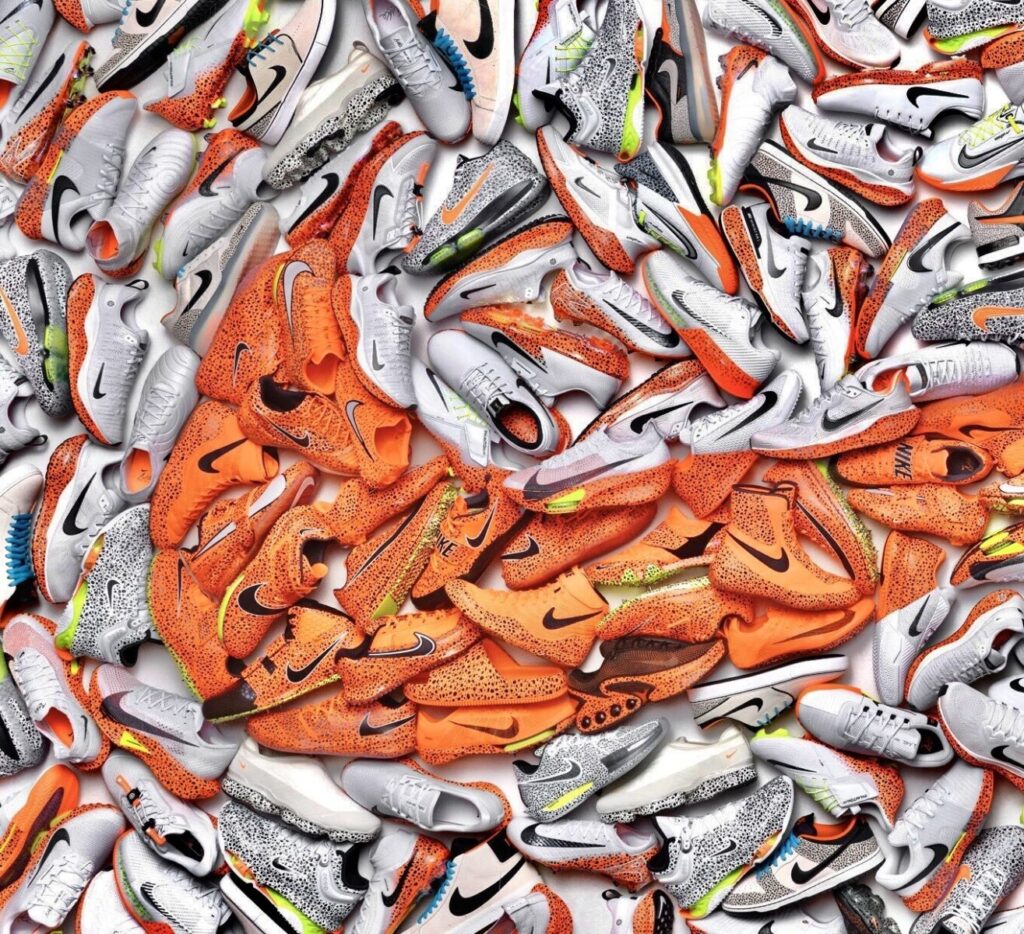
As Hill begins his role now, the reality is the rest of 2024 and into 2025 will be about elevating the energy in Beaverton and boosting the morale of the workplace in the short term. New products under Hill’s distinct direction may not hit the marketplace until late 2025 at the soonest and early 2026 at the likeliest.
A big boost is expected to come from Nike’s continued push to expand the exploding women’s basketball landscape. Hill was in New York on Monday, alongside NBA commissioner Adam Silver and WNBA commissioner Cathy Engelbert, to announce Nike’s new 12-year extension with both leagues as the official outfitter and strategic partner.
All three of Nike’s WNBA upcoming signature athletes — A’ja Wilson, Caitlin Clark, and Sabrina Ionescu — joined in on the panel conversations around advancing both the sport and inspiring through their Nike products.
Looking even further ahead, I expect Nike to go all out in creating real innovation and industry-shifting products in time for the 2028 Olympics in Los Angeles, which should define both the company’s direction and the footwear landscape into the next decade.
The company needs to place a widespread emphasis on launching groundbreaking product in 2028, much like Nike did in 2008 ahead of the Beijing Olympics, when it launched the Hyperdunk, Lunar Foam, and Flywire all in sequence.
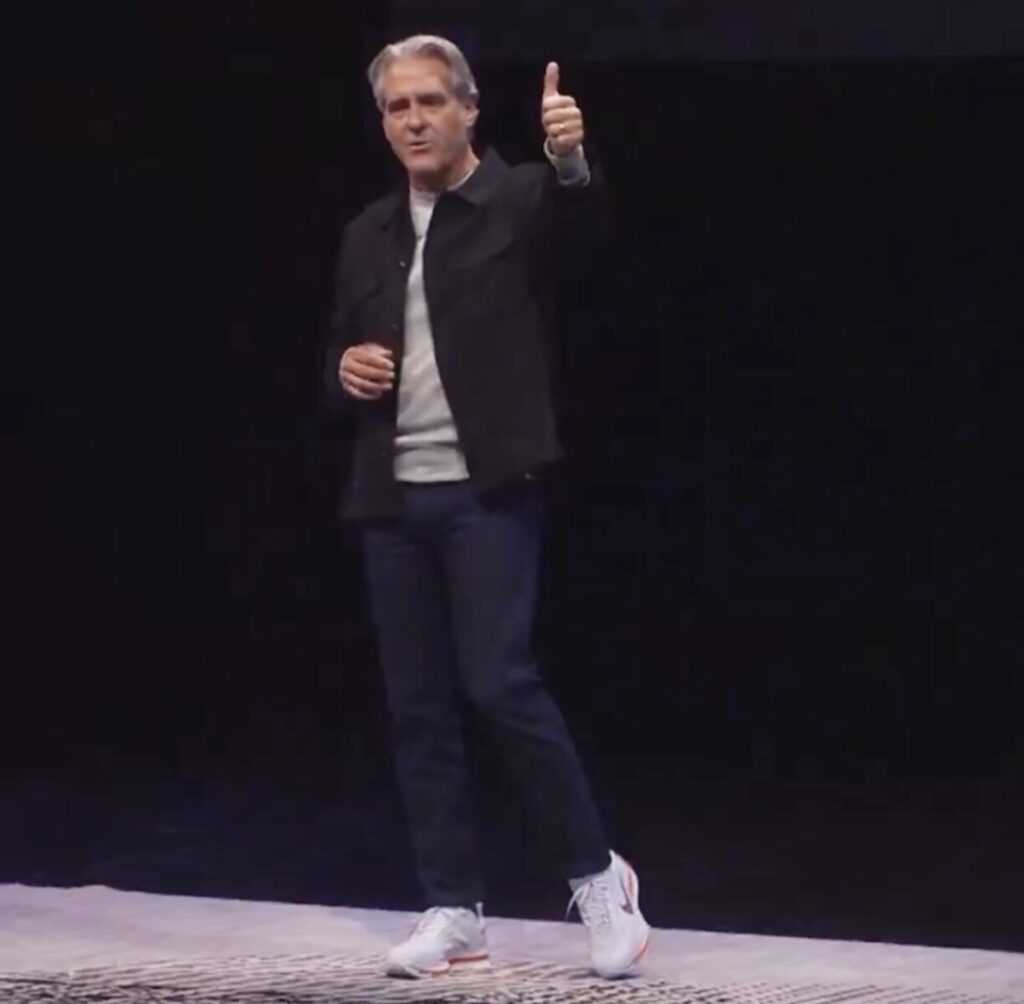
Some of the additional recent criticism has been centered around the notion that Nike simply got “too big.” If the prior CEO felt “too corporate” and “disconnected” to some internally, well, that was also just the reality of Nike’s status as the world’s largest sportswear brand looking to eclipse an annual revenue target of $50 billion.
In Hill, Mulholland sees someone who specifically excels at finding a balance within that dynamic.
“The era I saw Elliott navigating was the most exciting time at Nike,” added Mulholland. “They were a monster of a company, but internally, the key players were running their worlds as a smaller, more agile company. They were willing to take risks that nobody else was taking, and they addressed the sneaker market in a way that had people wanting more.”
As Reames alluded to in his lengthy and thoughtful LinkedIn post, Hill has several challenges to tackle at the helm of Nike. Challenging the brand’s innovation pipeline and retail strategy in recent years is fair.
But most of all, his appointment alone has already led to the promise of a more hopeful future for the company. There’s an overwhelming sentiment internally that the return of a “Swoosh lifer” can help Nike get back to being the irreverent and innovative brand we all know Nike to be.
“That’s not to say that suddenly everything with Nike will be sunshine and unicorns … there is a lot of work to be done,” said Reames. “But knowing he is at the helm is such a powerful motivating force.”
As he stood on stage at his introductory event to give his final rah-rah remarks, Elliott Hill kept things simple, giving a big-picture outline of his future expectations for the company, with his southern drawl kicking in for emphasis.
“We’re gonna grow. We’re gonna have fun. We’re gonna be proud,” he said, with a pause. “And we’re gonna win. Now, let’s get to work.”